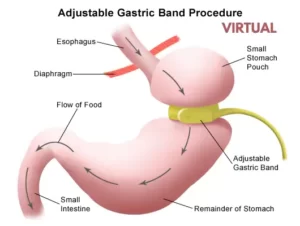Introduction:
Weight loss struggles are a common issue globally, with varying prevalence depending on factors such as region, age, gender, and socioeconomic status. The World Health Organization (WHO) reports that obesity has nearly tripled since 1975, affecting over 650 million adults worldwide and that a significant proportion of these individuals experience challenges with weight loss.
According to the Centers for Disease Control and Prevention (CDC), about 42.4% of U.S. adults were classified as obese in 2017-2018. A National Health and Nutrition Examination Survey (NHANES) from 2013-2016 reported that approximately 49.1% of adults tried to lose weight within the past 12 months.
The prevalence of obesity varies across European countries, with rates ranging from about 14% to over 30% in different regions. In Asia obesity rates are generally lower than in Western countries but are rising rapidly, particularly in urban areas .In Australia, about 67% of adults were classified as overweight or obese in 2017-2018 and in New Zealand approximately 34% of people are classified as obese.
Common challenges associated with weight loss involve biological, behavioral, socioeconomic and environmental factors.
Weight loss attempts are common, with cultural pressures and increasing awareness of health risks contributing to a growing number of individuals trying to lose weight.
The importance of healthy and sustainable weight management
Healthy and sustainable weight management is important for a variety of reasons that affect physical health, mental health, and overall quality of life. These factors are described in more detail below.
Physical Health Benefits
- Reduced Risk of Chronic Diseases such as type 2 diabetes, cardiovascular diseases, hypertension, certain cancers, and stroke.
- Improved Metabolic Health helping to regulate blood sugar levels, lipid profiles, and blood pressure, contributing to better metabolic health.
- Enhanced Mobility and Physical Function due to a reduction of the strain on joints and muscles, improving mobility and reducing the risk of osteoarthritis and other musculoskeletal disorders.
- Better Immune Function by supporting the immune system thus reducing susceptibility to infections and illnesses.
- Longevity: Maintaining a healthy weight is associated with a longer lifespan and better quality of life in older age.
Mental Health Benefits
- Improved Mood and Mental Well-being: Weight management can reduce the risk of depression, anxiety, and other mental health issues. Exercise, a key component of weight management, is known to release endorphins that enhance mood.
- Increased Self-esteem and Body Image: Achieving and maintaining a healthy weight can improve self-esteem and body image, contributing to better overall mental health.
- Reduced Stress: Regular physical activity and a balanced diet can help manage stress levels and improve sleep quality.
Social and Economic Benefits
- Enhanced Quality of Life: Healthy weight management can lead to improved energy levels, better sleep, and overall enhanced quality of life.
- Increased Productivity: Better physical and mental health contributes to higher productivity at work and in daily activities.
- Lower Healthcare Costs: Preventing obesity-related diseases reduces healthcare costs for individuals and society as a whole.
Environmental Benefits
- Sustainable Eating Practices: Healthy weight management often involves adopting sustainable eating practices, such as consuming more plant-based foods and reducing the intake of highly processed foods. This can lower the environmental impact of food production.
- Reduced Food Waste: Mindful eating habits can contribute to reduced food waste, benefiting the environment.
Virtual Gastric Band Hypnotherapy:
Virtual gastric band hypnotherapy as a non-invasive technique for weight loss
Virtual gastric band hypnotherapy is a non-invasive weight loss technique that uses the power of suggestion and hypnosis to create the psychological effect of having a gastric band fitted around the stomach. This method involves the virtual placement of a gastric band by the utilization of hypnotic suggestions while the client is in a hypnotic state to help individuals feel fuller faster, eat smaller portions, and make healthier food choices without undergoing actual surgery.
How hypnotherapy can help change eating behaviors and promote feelings of satiety?
Hypnotherapy can help change eating behaviors and promote feelings of satiety through several mechanisms that leverage the power of the subconscious mind and works best for those who are motivated and ready to change and susceptible to hypnosis. Here’s how hypnotherapy can help:
1. Altering Perceptions and Attitudes Toward Food
- Reframing Food Associations: Hypnotherapy can help change how an individual views certain foods. For example, it can reduce cravings for unhealthy foods by associating them with negative feelings and promote a positive association with healthier options.
- Mindful Eating: Hypnotherapy encourages mindful eating by making individuals more aware of their eating habits, helping them to slow down, savor their food, and recognize satiety signals.
2. Enhancing Self-Control and Willpower
- Strengthening Resolve: Hypnosis can reinforce the individual’s determination and commitment to their weight loss goals. It can enhance willpower, making it easier to resist temptations and stick to a healthy eating plan.
- Reducing Emotional Eating: By addressing the emotional triggers that lead to overeating, hypnotherapy can help individuals develop healthier coping mechanisms for stress, anxiety, and other emotions that might otherwise lead to eating.
3. Promoting Satiety and Fullness
- Visualization Techniques: During hypnotherapy sessions, the therapist can guide the individual to visualize their stomach as smaller, similar to the effect of a physical gastric band. This can create a sensation of fullness with smaller portions of food.
- Sensory Cues: Hypnotherapy can enhance sensitivity to natural satiety signals from the body, such as feelings of fullness or satisfaction, which can help individuals stop eating before they overeat.
4. Behavioral Modification
- Healthy Habits: Hypnotherapy can instill new, healthier eating habits by repetitively suggesting positive behaviors, such as choosing nutritious foods, eating at regular times, and avoiding snacks between meals.
- Breaking Bad Habits: It can also help break unhealthy eating patterns, such as late-night snacking or eating out of boredom, by associating these behaviors with undesirable outcomes.
5. Stress Reduction
- Relaxation Techniques: Hypnotherapy often involves relaxation techniques that can reduce overall stress levels. Lower stress can decrease cortisol levels, which are associated with increased appetite and fat storage, particularly around the abdomen.
- Better Sleep: Improved relaxation and reduced stress can also lead to better sleep, which is crucial for weight management as poor sleep can disrupt hunger hormones like ghrelin and leptin.
Potential benefits:
Reduced cravings for eating and effective portion control provide numerous benefits, including weight loss and maintenance, improved nutritional intake, better blood sugar control, enhanced digestion, and psychological well-being. These practices contribute to long-term health benefits, such as a lower risk of chronic diseases and improved energy levels, making them essential components of a healthy lifestyle. Encouraging these habits can lead to sustainable health improvements and a better quality of life.
The consultation process and what to expect from sessions
The consultation process and what to expect from virtual gastric band hypnotherapy sessions involve the following key steps.
Initial Consultation
- Assessment: The process typically begins with an initial consultation where the hypnotherapist assesses the individual’s health, weight loss goals, eating habits, and psychological readiness for hypnotherapy. This may involve discussing the person’s medical history, lifestyle, and previous weight loss attempts.
- Explanation: The therapist explains how virtual gastric band hypnotherapy works, what to expect during the sessions, and addresses any questions or concerns. This helps set realistic expectations and ensures the individual understands the process.
- Suitability: The therapist evaluates whether the individual is a good candidate for hypnotherapy, considering factors like openness to hypnosis, commitment to the process, the absence of contraindications such as severe mental health issues and readiness to make lifestyle changes.
Hypnotherapy Sessions
- Session Preparation: Before the session, the therapist might provide instructions on how to prepare, such as avoiding heavy meals and creating a quiet, comfortable environment if the session is conducted online.
- Induction: Each session typically begins with an induction phase where the therapist guides the individual into a relaxed, focused state of mind using techniques like deep breathing, progressive muscle relaxation, and visualization.
- Deepening: To deepen the hypnotic state, the therapist may use methods like counting down or guided imagery, ensuring the individual reaches a state where they are highly receptive to suggestions.
- Suggestion Phase: The core of the session involves delivering positive suggestions to the subconscious mind. These suggestions often include:
- Imagining a gastric band being fitted around the stomach, creating a sensation of a smaller stomach.
- Feeling full and satisfied with smaller portions of food.
- Craving healthier foods and feeling indifferent to unhealthy options.
- Developing new, healthier eating habits and coping strategies for emotional eating.
- Visualization: The therapist might use guided visualizations to reinforce the sensation of the gastric band and promote positive eating behaviors. For example, individuals might visualize themselves eating smaller portions and feeling satisfied.
- Ego Strengthening: The therapist often includes suggestions to boost self-esteem, confidence, and motivation, reinforcing the individual’s ability to succeed in their weight loss journey.
- Awakening: The session concludes with the therapist gradually bringing the individual out of the hypnotic state, ensuring they feel relaxed and positive.
Post-Session Activities
- Reinforcement: The therapist may provide audio recordings of the session or additional materials for the individual to use between sessions, reinforcing the suggestions made during hypnotherapy.
- Behavioral Guidance: Practical advice on diet, exercise, and lifestyle changes may be given to support the weight loss process. This holistic approach ensures the individual has the tools needed to maintain their progress.
- Follow-Up: Subsequent sessions are scheduled to monitor progress, address any challenges, and reinforce the virtual gastric band and positive eating behaviors. These sessions also allow for adjustments based on the individual’s experience and feedback.
Important Considerations
- Consulting a healthcare professional before starting any new weight loss program is essential to ensure safety, effectiveness, and a tailored approach that considers the individual’s unique health needs and circumstances. This professional guidance helps prevent potential health risks.
- Virtual gastric band hypnotherapy has several limitations, including varied individual responses, the need for ongoing commitment, and limited scientific evidence. However, it can be an effective part of a comprehensive weight loss plan by promoting behavioral changes, managing psychological factors, and creating a sensation of fullness. Its success is maximized when combined with other weight loss strategies such as dietary modifications, exercise, and professional support.
- A sustainable and healthy weight loss strategy involves a comprehensive approach that includes education, personalized plans, support systems, and practical strategies. By focusing on intrinsic motivation, flexibility, and long-term perspective, individuals can adopt and maintain healthy behaviors that work for them.
People vary in their responses to weight reduction options – there is no one way that fits all approach. Those aspiring to reduce weight are therefore advised to explore different weight reduction methods and select the method that works best for them, their lifestyle and budget. It is however important to seek professional guidance, behavioral change strategies, and technology to further enhance success and sustainability in weight management.
Conclusion
- A sustainable and healthy weight loss strategy involves a comprehensive approach that includes education, personalized plans, support systems, exercise, a change in mindset from living to eat – to eating to live along with other practical strategies that work for you.
- In addition to assisting you to incorporate healthy eating and lifestyle patterns, Virtual Gastric Band can assist those who are committed and ready to reduce their weight by:
- Enhancing self-control and willpower
- Reducing emotional eating
- Promoting a sensation of satiety and fullness so participants are satisfied with smaller amounts of food
- Altering perceptions of food
- Encouraging mindful eating
- Encouraging a preference for natural, unprocessed and healthy food
- Breaking unwanted eating habits
- Reducing stress and enhancing sleep to support weight reduction.
Adopting healthy eating patterns is essential for maintaining a healthy weight and overall well-being. By incorporating a balanced diet rich in fruits, vegetables, whole grains, lean proteins, and healthy fats, individuals can provide their bodies with the necessary nutrients to function optimally. Consistently choosing nutrient-dense foods over processed and high-sugar options helps regulate energy levels, supports metabolic health, and reduces the risk of chronic diseases such as obesity, diabetes, and heart disease. Making mindful eating choices not only promotes physical health but also enhances mental clarity and emotional stability, leading to a more vibrant and fulfilling life. By prioritizing healthy eating habits, individuals can achieve and maintain a healthy weight, paving the way for long-term wellness and vitality.





